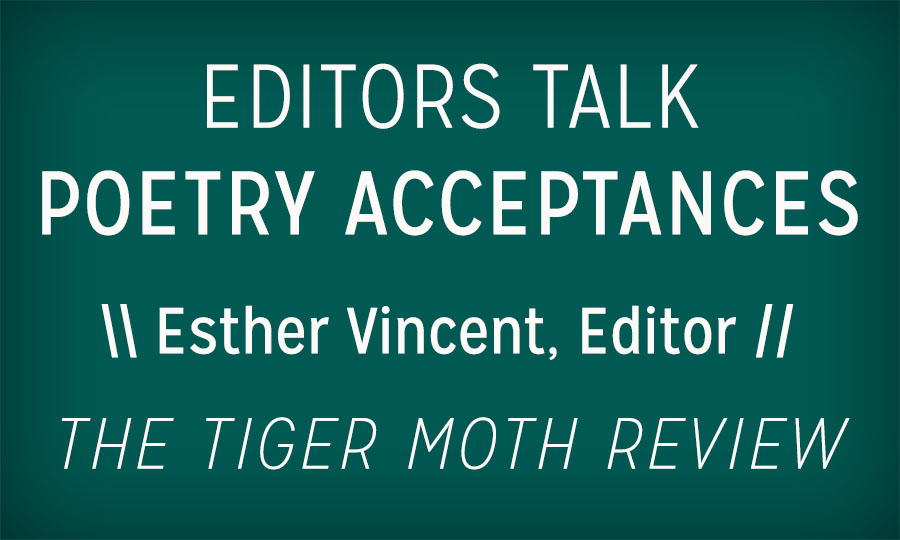Editors Talk Poetry Acceptances: Esther Vincent, The Tiger Moth Review

As a platform for emerging poets, our mission is to provide practical help for serious writers. The community lifts itself up together or not at all. In that light, we’ve been asking some great editors from around the literary community for their frank thoughts on why poems may get accepted/rejected from their own slush pile of submissions, and what poets can do to better their chances. Today, we’re speaking with Esther Vincent, Poetry Editor of The Tiger Moth Review.
From a craft standpoint, what causes you to accept a poem?
Esther Vincent: The poetry that I look out for in The Tiger Moth Review should firstly address one of the themes of nature, culture, the environment and ecology, which is the focus of the journal. How a poet chooses to engage with these themes is really up to them. I prefer poems that are concrete rather than abstract, poems that are accessible and local in subject matter yet global in its outlook and perspective. It is also crucial for the poet to commit to imagery that is both striking yet nuanced, and in terms of tone, I am drawn to the introspective, contemplative and self-reflexive persona who speaks to me hidden truths which are revealed by the end of the poem.
I don’t look for specific styles or aesthetics, just a poem that observes, thinks and poses questions to the reader. A poem that adds value to anyone who spends their time reading it, one that brings readers on a journey of self-discovery and insight.
What advice do you have for new poets who are submitting work?
Esther Vincent: I would say to take the time to read what the journal is about, to understand its vision and then think about whether or not your work resonates with that journal before submitting. Every editor takes the time to share what their journal aims to do, and it’s only respectful to read before submitting. Read previous issues to see the kind of work that has been featured, so that you can gauge whether or not your work is suited to the journal. Be ready for rejection, take it in good stride and see it as an opportunity for growth rather than getting disappointed or defensive. Always be professional and respect the editor’s decision. Lastly, edit your work before submitting it for consideration! It is a big no-no to submit drafts of your work and expect the editor to proofread your submission for you.
How many rejections have you faced and how do you deal with them?
Esther Vincent: Like I said earlier, it is normal to get rejected. I get more rejections than acceptances. Sometimes, it’s because your work is not up to standard, and it just means you have to practice and work on your poem more. Sometimes, it’s because your work does not fit what the editors are looking for, although you may have written a great poem. I don’t take any rejection personally, but I see it as feedback for improvement. I just move on, relook my poems, and ask myself, what can I do better? Where else can I submit?